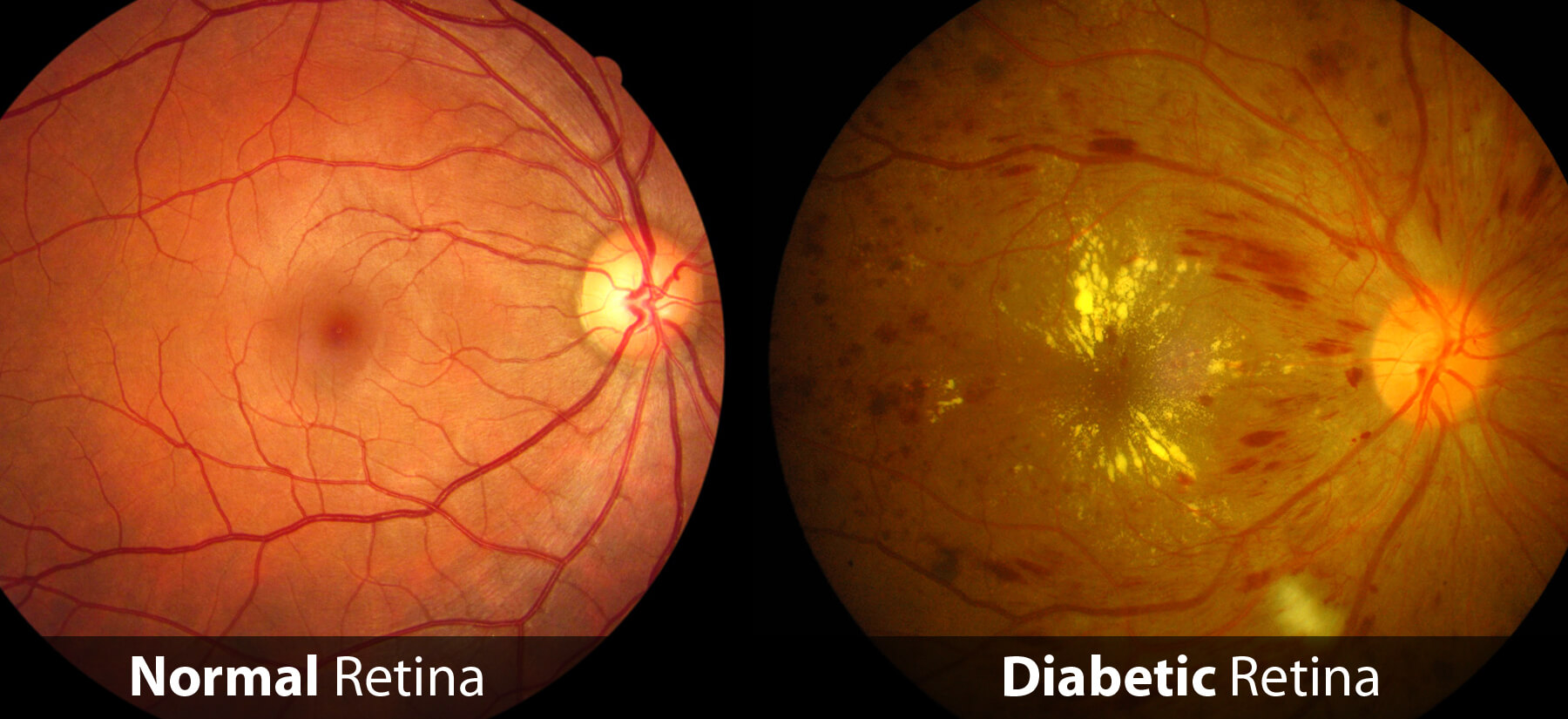Understanding Diabetic Retinopathy (Diabetic Eye Care)
Diabetic retinopathy is a disease affects diabetic people and eventually leads to blurry, distorted vision and blindness. When people suffer from diabetes they may often have unstable glucose levels and they are prone to circulation problems in the retina, located at the back of the eye. The retina is a very sensitive part of the eye that is responsible for interpreting the images that you see and then transmitting these images to the brain. If someone is diabetic they may experience a restriction on the flow of blood through the vessels within the retina. When this restriction occurs, swelling and bleeding may result. In some cases, fluid can collect under the retina.

Many diabetic patients can have diabetic retinopathy without knowing it. Usually, there is no pain and no outward sign. Over time, you may notice gradual blurring or some vision loss. Symptoms may come and go. If diabetic retinopathy is severe, you may have clouded vision or blindness. You should have regular eye exams to help your doctor detect changes in your eyes before your vision is damaged. Treatment may help slow the progress of diabetic retinopathy and sometimes can restore lost vision. Your treatment depends on your condition but may include frequent exams to monitor your condition, laser treatment, surgery or other procedures.
If you or a family member have diabetes, be sure to schedule a comprehensive eye examination to protect your vision. The doctors at Raleigh Ophthalmology are experienced in retinal disease and expert retina care. If you are diabetic contact us today! The proper diagnosis of diabetic retinopathy is made during a routine eye examination by directly observing the retina through a dilated pupil. The evaluation sometimes requires further testing with Fluorescein Angiography and Ocular Coherence Tomography (OCT).
Diagnosing Diabetic Retinopathy
It is very common for diabetic retinopathy to be found during routine eye exams.
“Nearly half of people with diabetes have some degree of diabetic retinopathy, a complication of diabetes that can result in blindness. After 20 years with diabetes, most patients have diabetic retinopathy. Treatment depends on the severity of the condition.” (quote from MAYO CLINIC)
Treatment Options
If changes are found there are some useful treatments depending on the nature and severity of the diabetic retinopathy. These include laser treatment, therapeutic injections of Avastin, Eylea, or Lucentis, and if a hemorrhage has occurred in the eye, vitrectomy (surgical removal of the vitreous).
Laser Treatment For Diabetic Retinopathy
There are two types of laser treatment. The first is known as Panretinal Photocoagulation (PRP) and it consists of laser spots being burned into a wide area of the Retina. This decreases the Retina’s need for oxygen. For this surgery, the patient’s eyes are dilated and numbed. The doctor than focuses the laser on the appropriate locations of the retina and places the laser spots. The patient will experience light flashes. Since a laser is used the patient will experience some discomfort but healing time is quick although a driver for the trip home is required.
The second type of laser treatment for diabetic retinopathy is known as Focal Laser Photocoagulation. During this procedure, the blood vessels of the eye are sealed and shrunken. This procedure feels the same as the first laser treatment, and the patient is given mild numbing drops. This is performed in earlier stages of diabetic retinopathy in order to eliminate leaky blood vessels.
